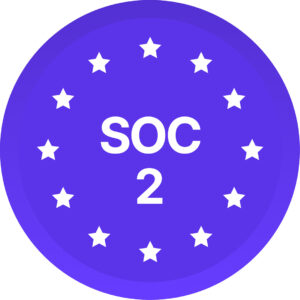In today’s hyper-competitive business world, leaders are constantly searching for the edge that sets their teams apart. Often, that edge isn’t found in cutting-edge tech or a revolutionary product, it’s in people. More specifically, in motivated people.
Employee motivation is one of the most powerful, and often underestimated, drivers of performance. Understanding how and why motivation works isn’t just good leadership, it’s smart business.
What exactly is employee motivation?
At its core, employee motivation is what gets people out of bed in the morning and what keeps them energized through tough projects, long meetings, and unexpected challenges. It’s the fuel behind drive, commitment, and engagement.
Motivation can be split into two main types:
- Intrinsic motivation: The internal stuff, satisfaction, pride, purpose. When someone’s doing work because they find it meaningful or enjoyable.
- Extrinsic motivation: The external stuff, bonuses, titles, public recognition. These are the visible rewards tied to performance.
The most effective workplaces tap into both cultivating environments where people feel personally fulfilled and appropriately rewarded.
Why motivation matters for performance
Let’s cut to the chase: Motivated employees perform better.
According to Gallup’s Global Workforce Study, companies with highly engaged employees see 21% higher profitability and 17% higher productivity than their less engaged peers. Those aren’t soft metrics, that’s bottom-line impact.
Training and development also play a key role. Companies that invest in structured training see 218% higher income per employee than those that don’t. Why? Because when people feel invested in, they invest back.
What fuels (or fizzles) employee motivation?
Several factors consistently emerge as motivation boosters:
Recognition & appreciation
It’s simple: when people feel seen, they show up stronger. Research shows employees who feel heard are 4.6 times more likely to give their best at work.
Opportunities for growth
Ambitious employees want to learn, evolve, and rise. Organizations without clear development paths risk losing top performers to those that offer them.
Work-life balance
No one can sprint forever. Leaders who protect time for deep work, simplify workflows, and support personal boundaries help employees stay energized and focused.
Compensation & benefits
Fair pay isn’t just a nice-to-have, it’s foundational. Strong compensation signals respect and drives performance, especially when paired with the right culture.
Turning insight into action: Motivation strategies that work
Want to build a motivated workforce? Here’s where to start:
1. Prioritize continuous learning
Training isn’t just a box to tick — it’s a signal. When companies dedicate resources to development (as 62% do via internal training services), employees feel valued and capable of growing with the business.
2. Build an inclusive culture
When people feel like they belong, motivation soars. Companies like Hilton and Premier Inn have made inclusion a core business strategy and seen innovation and engagement rise as a result.
3. Clarify goals & expectations
Motivation thrives on clarity. Vague roles and moving targets sap energy. Clear goals give employees a sense of direction and purpose.
4. Give feedback & recognition regularly
A quick “great job” can have a lasting impact. JetBlue, for example, saw retention improve by 3% for every 10% increase in employee recognition. That’s a simple change with measurable results.
5. Keep Compensation Competitive
Pay attention to market shifts. Review compensation packages regularly to ensure they reflect employees’ value not just cost savings.
The Leadership X-Factor
All of this ties back to one key influence: leadership. Motivated employees are often the result of intentional, empathetic leaders who create the right conditions.
Great leaders:
- Communicate a clear vision so employees know how their work contributes to the bigger picture.
- Empower people with autonomy, trust, and meaningful responsibility.
- Demonstrate empathy, checking in not just on performance, but on people.
Model the energy they want to see because motivation is contagious.
Final thoughts
Motivation isn’t a perk, it’s a performance strategy.
Companies that intentionally cultivate motivation through recognition, development, inclusion, and fairness aren’t just building happier teams, they’re building better businesses.
By putting people at the center, you unlock the kind of performance that metrics alone can’t drive. And in today’s fast-moving market, that’s not just good leadership, it’s competitive advantage.
Ready to unlock the full potential of your people? Discover how Diversio helps organizations build inclusive, high-performing teams through data-driven insights and actionable strategies.
Book a consultation to see how we can support your team’s motivation and performance goals.

